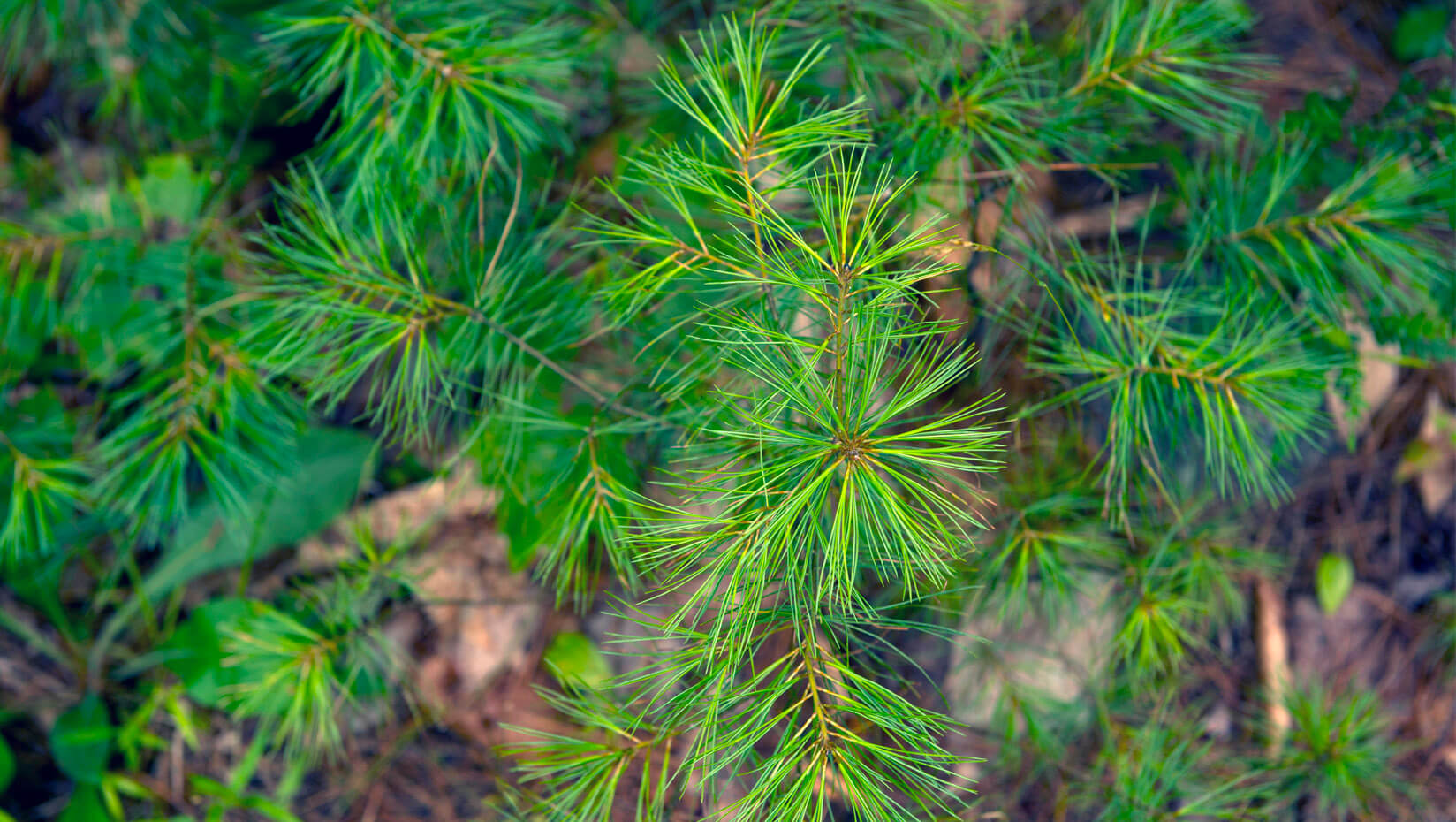
In changing climate, native fungal pathogen poses increasing health concerns for eastern white pine
A native fungal pathogen that has increasingly damaged eastern white pine throughout New England in the last three decades has been found to be most severe in stressed, weakened trees, leading University of Maine researchers to recommend proactive forest management practices such as thinning to improve the health and value of the seminal species.
The UMaine research team, led by William Livingston, associate director of the UMaine School of Forest Resources, and Kara Costanza, a Ph.D. candidate in forest resources, expects to issue a management plan for eastern white pine in the coming year, based on the findings of their three-year project focused on the health concerns resulting from Caliciopsis pinea and its impact on the region’s forest products industry. Management recommendations will aim to reduce future infestations and limit the amount of damage caused by the pathogen.
“The environment in Maine (and New England) has been changing,” Livingston says. “We’re now dealing with more extremes in climate — more severe drought in some years, record precipitation in months of other years. This is creating conditions stressful to the tree. We need to manage (the species) to maintain its value to the state.
“Better biological understanding, such as growing trees in wider spacing to get less fungal infection and greater wood growth, will increase the quality of the trees, helping landowners and mills recover the values now being lost,” he says.
Since the late 1990s, forest health specialists have found increasingly significant damage to white pine from the Caliciopsis canker — first in central New Hampshire and then elsewhere in New England.
In their project, UMaine researchers are collaborating with the U.S. Forest Service, New Hampshire Division of Forests and Lands, Maine Forest Service, Northeastern Lumber Manufacturers Association, and regional foresters and loggers. They are studying C. pinea to understand how it biologically affects trees, the pathogen’s incidence and severity, and its impact on the forest products industry. The researchers also want to understand the other stress agents affecting the health of white pine, such as insects, other fungi or climatic events.
Preliminary findings indicate the native fungal pathogen is ubiquitous in New England. And, it is not alone. DNA analyses revealed approximately 30 fungal species present at the site of canker and resin pitching damage, but C. pinea is still the primary pathogen.
The UMaine researchers focused on eastern white pine in southern New Hampshire and southwestern Maine, where C. pinea infestations are causing higher levels of damage. Of the 60 white pine trees that were processed for lumber, C. pinea was found in up to 48 percent. The pathogen resulted in a lower grade or value in up to 13 percent of the lumber. Lumber with the heaviest damage from C. pinea — profuse pitching, necrotic tissue, and staining of the xylem — also had additional loss in value from associated factors such as black knots, decay, and non-C.pinea-related resin streaking.
C. pinea appears to cause more damage to stressed white pine trees, such as those growing on poor soils or in extremely dense, overstocked stands. Extremes in climate are also predisposing trees to more damage due to drought, such as that recently experiences in southern Maine and New England. On the opposite extreme, record precipitation levels in June during other years have created favorable conditions for needle pathogens to cause needle yellowing and loss, another tree stress favoring C. pinea infections.
Eastern white pine is a culturally and economically significant species in northeastern North America, and is the Maine state tree. Often referred to as “the tree that built America,” eastern white pine was used in boatbuilding and home construction.
“This is an amazing tree with an important heritage to the state,” Livingston says. “When Europeans first came here, eastern white pine was growing 4 to 6 feet in diameter, 150 feet tall and covered a quarter of the Penobscot River watershed. It was a superdominant species, often twice the size of the trees around it, and used by the British navy for ship masts.”
Today, eastern white pine remains commercially and ecologically significant in Maine, Livingston says. In the state, approximately $40 million is annually paid for white pine by the mills to produce products, and the mills employ hundreds of workers and add value by sawing the trees into high-value lumber products. A conservative estimate of white pine value in Maine’s forest is over $2 billion, he says.
What’s happening to white pine is not unique to Maine, Livingston says. That’s why a multistate working group is focused on the health concerns for white pine throughout its native range.
“(C. pinea) has been around since at least 1880, but only in the last 20 to 30 years have we seen an increase in damage,” Costanza says. “That’s one of the biggest concerns: Why is the health of eastern white pine changing”?
“Multiple insects and fungi are affecting white pine health throughout its range, but knowing how they interact together will help the multistate group develop overall management plans that will be a huge help to the industry,” she says.
Contact: Margaret Nagle, 207.581.3745
